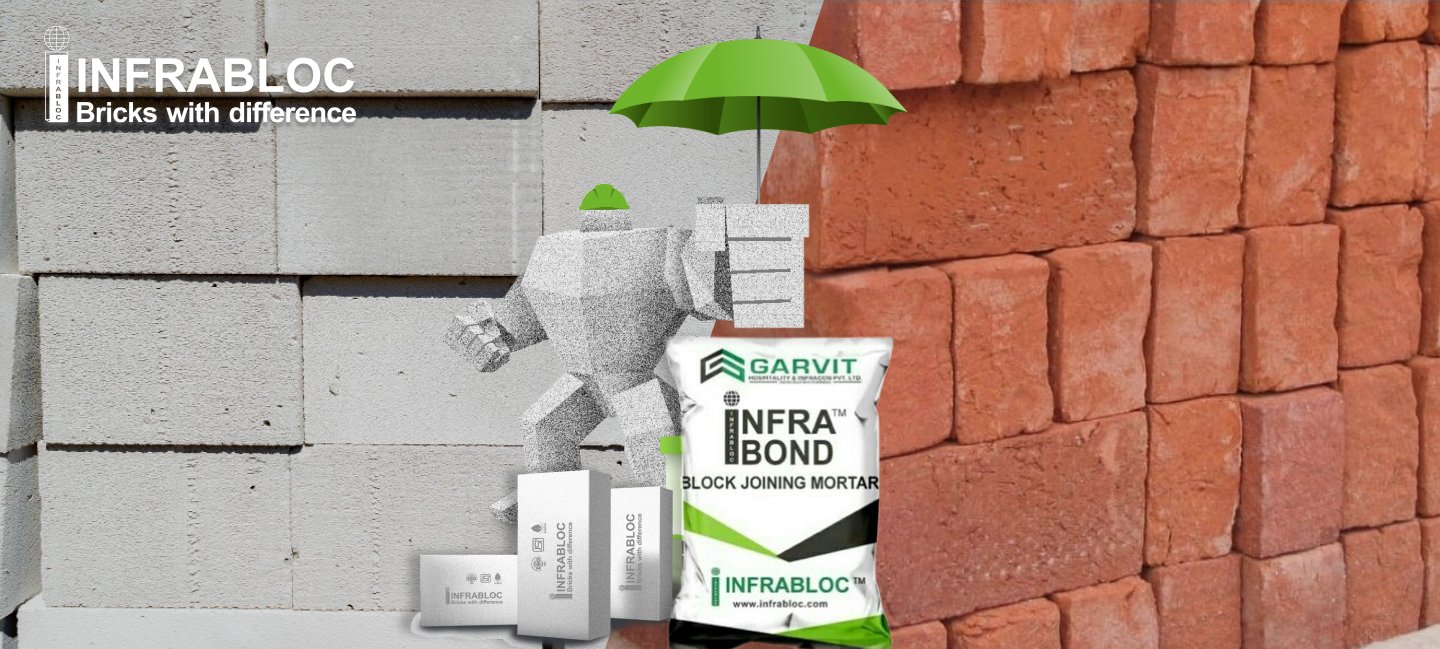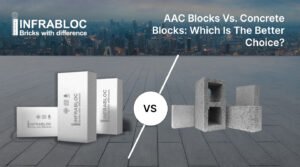Quality
Infrabloc AAC Blocks
Infrabloc AAC blocks are renowned for their high-quality construction material. Manufactured under controlled conditions with precise proportions of raw materials, AAC blocks ensure consistent quality. Their low density imparts strength while keeping them lightweight, and they boast excellent thermal insulation properties.
Red Bricks
Red bricks have been a staple in construction for many years. However, their quality can vary based on factors such as raw materials, manufacturing processes, and environmental conditions. Red bricks are relatively heavy and offer moderate thermal insulation properties.
Strength
Infrabloc AAC Blocks
Infrabloc AAC blocks exhibit high compressive strength, providing structural stability and durability. Engineered to withstand heavy loads, they find applications in various construction scenarios, including load-bearing walls.
Red Bricks
Red bricks possess decent compressive strength, but they generally do not match the strength of AAC blocks. They are commonly used for non-load-bearing walls and partitioning structures.
Thermal Insulation
Infrabloc AAC Blocks
With their porous structure, Infrabloc AAC blocks excel in thermal insulation. They regulate indoor temperatures by reducing heat transfer, promoting energy efficiency, and minimizing reliance on heating or cooling systems.
Red Bricks
Red bricks offer moderate thermal insulation capabilities compared to AAC blocks. Additional insulation materials may be required to achieve optimal energy efficiency with red bricks.
Ease of Use
Infrabloc AAC Blocks
AAC blocks are lightweight and easy to handle, facilitating convenient construction. Standard sizes enable quick installation and reduced labour costs. They can be easily cut, shaped, and drilled to fit specific requirements.
Red Bricks
Red bricks are relatively heavier, making them more labour-intensive during construction. Their irregular sizes may necessitate additional time and effort for accurate fitting.
Environmental Impact
Infrabloc AAC Blocks
AAC blocks are considered eco-friendly due to their utilization of recycled materials, minimal greenhouse gas emissions during manufacturing, and low energy consumption. Furthermore, their lightweight nature reduces carbon emissions associated with transportation.
Red Bricks
Red bricks, being made from clay, require high-temperature firing that contributes to environmental degradation and air pollution. The extraction of clay for brick production can also have an impact on natural resources.
By considering these factors, you can make an informed decision when choosing between AAC blocks and red bricks for your construction needs. Select the option that aligns with your project requirements, sustainability goals, and budget.




